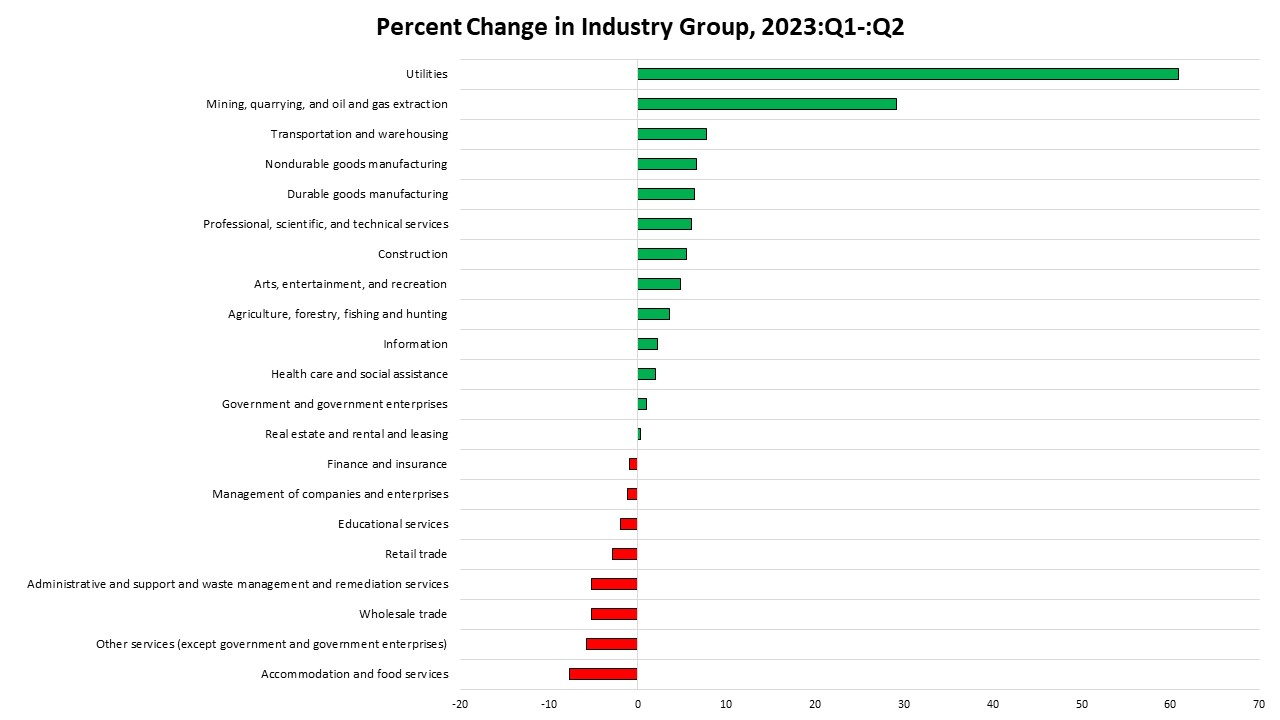Real gross domestic product (GDP) increased in 44 states and the District of Columbia in the second quarter of 2023. Economic activity contracted in six states. According to the U.S. Bureau of Economic Analysis (BEA), the percent change in real GDP increased ranged from 8.7 percent in Wyoming to -1.9 percent in Vermont.
Nationwide, growth in real GDP, measured on a seasonally adjusted annual rate basis, increased 2.1 percent in the second quarter of 2023, after an increase of 2.2 percent in the first quarter of 2023. Utilities; professional, scientific, and technical services; durable-goods manufacturing; and mining were the leading contributors to the increase in real GDP across the country.
Regionally, real GDP growth increased in all the regions from the first quarter of 2023 to the second quarter. The percent change in real GDP ranged from 4.3 percent increase in the Southwest region (Arizona, New Mexico, Oklahoma, and Texas) to 1.3 percent increase in the Mideast (Delaware, District of Columbia, Maryland, New Jersey, New York, and Pennsylvania) region.

Overall, 13 out of 21 industry groups [i]contributed to the increase in real GDP. Utilities; mining, quarrying, and oil and gas extraction; and transportation and warehousing were the leading contributors to the increase in real GDP in the second quarter of 2023. On the other hand, accommodation and food services decreased in 49 states and the District of Columbia.

At the state level, utilities increased in all 50 states and the District of Columbia and was the leading contributor to growth in 22 states. Mining was the leading contributor to growth in eight states, including Wyoming (8.7 percent), the state with the largest increase in real GDP. Agriculture, forestry, fishing, and hunting was the leading contributor to growth in 6 states, including Kansas (7.4 percent) and Nebraska (5.9 percent), the states with the second- and third-largest increases in real GDP, respectively. Accommodation and food services was the leading contributor to the decrease in Vermont (-1.9 percent), the state with the largest decline in real GDP.

[i] BEA prepares quarterly estimates for 23 industry groups. For this analysis, Federal Civilian, Military, and State and Local are combined under “Government and government enterprises”.

